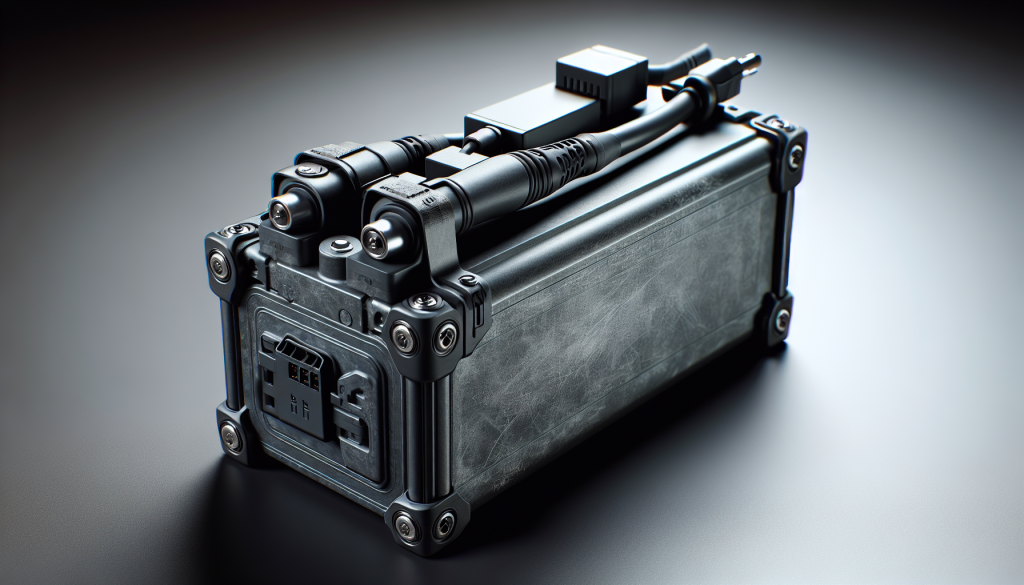How Do I Know If My Ebike Battery Needs To Be Replaced?
Imagine cruising along on your ebike, feeling the wind in your hair and the thrill of the open road. But suddenly, you start to notice a dip in your battery’s performance. Is it just a temporary glitch, or does your ebike battery need to be replaced? Don’t worry, we’ve got you covered. In this article, we’ll explore the telltale signs that indicate it’s time to swap out your trusty battery for a fresh one. So, buckle up (or should I say, pedal up), and let’s get ready to ride!
Signs that indicate a need to replace the ebike battery
Reduced range
One of the most common signs that indicate the need to replace your ebike battery is a reduced range. If you find that you are not able to travel as far on a single charge as you used to, it may be time to replace the battery. Over time, the capacity of the battery can degrade, resulting in a decrease in the distance you can travel before needing to recharge.
Decreased power
Another sign that your ebike battery may need to be replaced is a decrease in power. If you notice that your bike is not able to maintain the same level of power or speed as it used to, it could be due to a deteriorating battery. As the battery ages, its ability to deliver sufficient power to the motor may diminish, resulting in a noticeable decrease in performance.
Slow charging
If you find that your ebike battery is taking longer than usual to charge, it could be a sign that it needs to be replaced. Normal charging times for an ebike battery typically range from a few hours to overnight. However, if you notice that your battery is consistently taking longer to charge, it may be an indication that the battery is no longer functioning optimally and should be replaced.
Frequent need to recharge
If you find that you need to recharge your ebike battery more frequently than before, it may be a sign that the battery is nearing the end of its lifespan. As the battery deteriorates, it may not be able to hold a charge for as long as it used to, resulting in the need for more frequent recharging. If you are finding that your bike’s battery life is significantly shorter than when it was new, it could be time to replace the battery.

Battery heats up excessively
If you notice that your ebike battery is becoming excessively hot during use or charging, it is a definite sign that the battery needs replacement. Overheating can be a result of internal battery problems, such as degradation of the battery cells. Excessive heat can not only affect the overall performance of the battery but also pose a safety risk.
Battery fails to hold a charge
Perhaps one of the most obvious signs that your ebike battery needs to be replaced is when it no longer holds a charge. If you find that the battery drains quickly even after a full charge or if it dies out completely after a short period of use, it is a clear indication that the battery is no longer functioning properly and should be replaced.
Physical damage
Physical damage to the ebike battery, such as dents, cracks, or leaks, is an obvious sign that it needs to be replaced. It is important to regularly inspect your battery for any signs of physical damage and address them immediately. Damaged batteries not only compromise the performance and safety of your ebike but can also be a potential fire hazard.
Battery age
The age of the ebike battery is another factor that can indicate the need for replacement. Most manufacturers provide an estimated lifespan for their batteries, typically ranging from two to five years. If your battery has exceeded its recommended lifespan, it is advisable to replace it, even if it still appears to be functioning adequately. Aging batteries can experience a decline in performance and reliability, making it safer and more efficient to invest in a new battery.

Incompatibility with newer technologies
As new technologies and advancements are made in the electric bike industry, it is possible for older ebike batteries to become incompatible with newer models or components. If you find that your battery is not compatible with the latest updates or upgrades available for your ebike, it may be a sign that it is time to replace the battery. By doing so, you can ensure that you are able to take full advantage of the latest features and improvements in the industry.
Manufacturer recommendations
Finally, it is essential to consider the recommendations of the ebike battery manufacturer regarding replacement. Each manufacturer may have specific guidelines and recommendations for when to replace the battery. It is important to follow these recommendations to ensure optimal performance and safety of your ebike. Ignoring or neglecting manufacturer recommendations can potentially lead to more significant issues and compromise the longevity of your bike.
Factors affecting ebike battery lifespan
Battery chemistry
The type of battery chemistry used in your ebike battery can have a significant impact on its lifespan. Different battery chemistries, such as lithium-ion or lead-acid, have different characteristics and lifespans. Lithium-ion batteries, for example, are known for their high energy density and longer lifespan compared to lead-acid batteries. Understanding the chemistry of your ebike battery can help you make informed decisions about its maintenance and replacement.
Depth of discharge (DOD)
The depth of discharge (DOD) refers to how much of the battery’s total capacity is used before it is recharged. Excessive or frequent deep discharges can shorten the lifespan of the battery. It is recommended to avoid draining the battery completely and instead maintain a reasonable DOD to extend its overall lifespan. Regular recharging before the battery reaches critically low levels can help prolong its longevity.

Charging habits
Your charging habits can also significantly impact the lifespan of your ebike battery. Overcharging or leaving the battery connected to the charger for prolonged periods can lead to unnecessary stress on the battery cells, potentially reducing their lifespan. It is important to follow the manufacturer’s recommendations for charging times and practices to ensure the longevity of your battery. Avoiding extreme temperatures during charging and storing the battery in a cool, dry place when not in use also helps maintain its overall health.
Environmental conditions
The environment in which your ebike battery is used and stored can affect its lifespan. Extreme temperatures, both hot and cold, can have a detrimental impact on the battery’s performance and longevity. High temperatures can accelerate the chemical reactions within the battery, leading to faster degradation, while extremely low temperatures can increase the internal resistance and reduce overall capacity. It is advisable to store and use your ebike battery in a moderate temperature environment to optimize its durability.
Maintenance practices
Proper maintenance of your ebike battery is crucial in extending its lifespan. Regular cleaning and inspection of the battery can help identify any signs of damage or deterioration early on, allowing you to address them promptly. Following the recommended maintenance procedures by the manufacturer, such as keeping the battery contacts clean and ensuring proper storage conditions, can significantly contribute to the longevity of your battery.
Determining factors for battery replacement
Reduced range compared to when new
One of the key factors to consider when determining if your ebike battery needs to be replaced is the reduced range compared to when it was new. If you find that you are not able to travel as far on a single charge as you used to, it may be an indication that the battery’s capacity has significantly degraded and cannot deliver the same level of performance.

Battery no longer holds a charge
If your ebike battery no longer holds a charge, it is a clear sign that it needs to be replaced. After a full charge, the battery should be able to sustain a certain amount of usage before needing to be recharged. If you find that your battery dies out quickly or struggles to hold a charge for even short distances, it is an indication that it is no longer functioning optimally.
Visible physical damage
Visible physical damage, such as cracks, leaks, or dents on the ebike battery, is an obvious sign that it needs to be replaced. Physical damage compromises the integrity and safety of the battery and can pose a risk not only to your ebike but also to your overall safety while riding. Any signs of physical damage should be taken seriously and addressed immediately.
Battery age exceeds recommended lifespan
Most manufacturers provide an estimated lifespan for their ebike batteries. If your battery has exceeded its recommended lifespan, it is wise to consider replacing it. Even if it still appears to be functioning, an aging battery can experience a decline in performance and reliability, compromising your overall riding experience and safety.
Inability to keep up with power demands
If you notice that your ebike battery struggles to keep up with the power demands of your electric bike, it may be time to replace it. As the battery ages, its ability to deliver sufficient power to the motor may diminish, resulting in a noticeable decrease in performance. If you find that your bike is slower, has difficulty climbing hills or inclines, or experiences a reduction in top speed, it could be an indication that the battery is no longer capable of meeting the power demands of your riding needs.
Detailed examination of battery replacement signs
1. Reduced range
When assessing the battery for replacement, it is important to compare the current range of your ebike to the expected range when the battery was new. Gradual decline in range over time can indicate a deteriorating battery. If you notice a significant decrease in the distance you can travel on a single charge, it may be time to invest in a new battery.
2. Decreased power
A clear sign that your ebike battery needs replacement is a decrease in power. Difficulty climbing hills or inclines, slower acceleration, and a reduction in top speed are indicators that the battery is deteriorating. If you notice a significant decrease in the bike’s performance, it is worth considering a battery replacement.
3. Slow charging
If your ebike battery consistently takes longer than usual to charge, it may be an indication that it needs to be replaced. Normal charging times range from a few hours to overnight. If you experience prolonged charging times, it could be a sign of battery deterioration.
4. Frequent need to recharge
If your battery gets drained quickly and requires more frequent recharging, it is a sign that the battery may be nearing the end of its lifespan. If you find yourself needing to charge your ebike battery more often than when it was new, it is a strong indicator that a replacement is necessary.
5. Battery heats up excessively
An ebike battery that becomes significantly warmer during usage or becomes hot during charging is exhibiting signs of an underlying problem. Excessive heat can be a result of battery degradation and can compromise its overall performance and safety. If you observe abnormal heat generation, it is important to address the issue and consider a battery replacement.
6. Battery fails to hold a charge
When an ebike battery no longer holds a charge, it is unmistakably in need of replacement. If you find that the battery drains quickly, even after a full charge, or if it dies out completely after a short period of use, it is a clear indication that the battery is no longer functioning properly and should be replaced.
7. Physical damage
Physical damage to the ebike battery, such as dents, cracks, or leaks, requires immediate attention and replacement. Damaged batteries not only compromise the performance and safety of your ebike but can also be a potential fire hazard. Regularly inspect your battery for any signs of physical damage and replace it if necessary.
8. Battery age
If your ebike battery has exceeded its recommended lifespan, it is advisable to replace it, regardless of its current functionality. Aging batteries can experience a decline in performance and reliability, making it safer and more efficient to invest in a new battery that will meet your riding demands.
9. Incompatibility with newer technologies
As the electric bike industry continues to evolve, newer technologies and advancements may render older ebike batteries incompatible. If you find that your battery is not compatible with the latest updates or upgrades available for your bike, it may be time to replace the battery. By doing so, you can ensure that you are able to take full advantage of the latest features and improvements in the industry.
10. Manufacturer recommendations
Following the recommendations of the ebike battery manufacturer regarding replacement is essential. Each manufacturer may have specific guidelines for when to replace the battery. By adhering to these recommendations, you can ensure optimal performance and safety of your ebike. Ignoring or neglecting manufacturer recommendations can potentially lead to more significant issues and compromise the longevity of your bike.
In conclusion, it is essential to be aware of the signs that indicate a need to replace your ebike battery and consider the factors that can affect its lifespan. Reduced range, decreased power, slow charging, frequent need to recharge, excessive heat generation, failure to hold a charge, physical damage, battery age, incompatibility with newer technologies, and manufacturer recommendations all play a role in determining the need for battery replacement. Regular maintenance practices and a thorough examination of these signs can help you make an informed decision about when to invest in a new ebike battery. By replacing your battery when necessary, you can ensure optimum performance, reliability, and safety during your electric bike rides.







